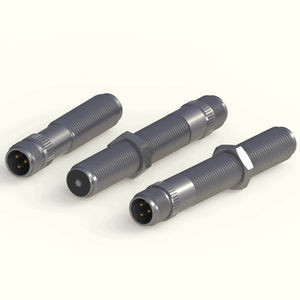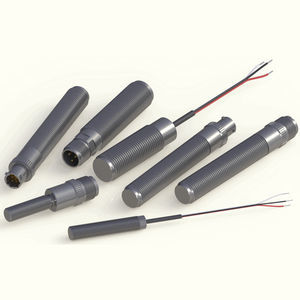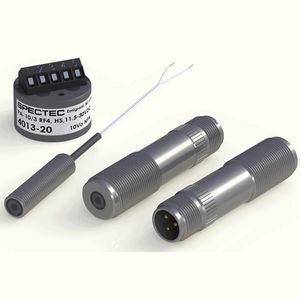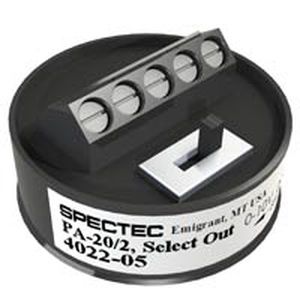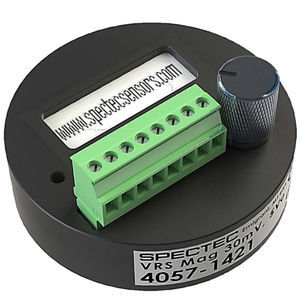
Variable reluctance speed sensor Variable Reluctance Speed Sensors (VRS)rotationalhigh-temperaturehigh-pressure


Add to favorites
Compare this product
Characteristics
- Type of movement
- rotational
- Technology
- variable reluctance
- Other characteristics
- stainless steel, robust, high-temperature, high-pressure
- Frequency
Min.: 3 Hz
Max.: 50,000 Hz
- Temperature range
Min.: -268 °C
(-450.4 °F)Max.: 232 °C
(449.6 °F)
Description
These passive sensors generate their own sinusoidal signal at the same rate as targets passing by. The magnitude of the voltage level is proportional to the speed of the target. They are used in a wide range of applications for speed sensing of ferrous targets. Flowmeter turbine blades, power transmission and timing gears, engine flywheels, bolt heads, and shaft keyways are typical targets.
Low drag versions are available for use with flow metering of low viscosity fluids and gases. Dual output versions are available for redundancy or driving two systems. High temperature and cryogenic versions can be used in temperatures from -268°C to +232°C (-450°F to +450°F). Extreme temperature versions can be special ordered for temperatures up to 450°C (850°F).
Intrinsically Safe and Explosion/Flame Proof versions are also available for Hazardous Locations. The output of this sensor can be converted to a digital signal with a Signal Amplifier. This sensor type can typically be replaced by an Amplified Variable Reluctance Speed Sensor or Hall Effect.
APPLICATIONS
• Flow metering
• Engine and turbo speed
• Anti-lock braking systems (ABS)
• Traction Control systems
• Conveyor / Process speed
• Oily, wet, and harsh environments
• High temperature / high-pressure
Catalogs
No catalogs are available for this product.
See all of Spectec‘s catalogsRelated Searches
- Rotational speed sensor
- Magnetic speed sensor
- Hall effect speed sensor
- Compact velocity sensor
- Linear velocity sensor
- Stainless steel velocity sensor
- Robust velocity sensor
- Threaded speed sensor
- Digital output speed sensor
- Electric speed sensor
- High-temperature velocity sensor
- Eddy current velocity sensor
- Variable reluctance speed sensor
*Prices are pre-tax. They exclude delivery charges and customs duties and do not include additional charges for installation or activation options. Prices are indicative only and may vary by country, with changes to the cost of raw materials and exchange rates.


